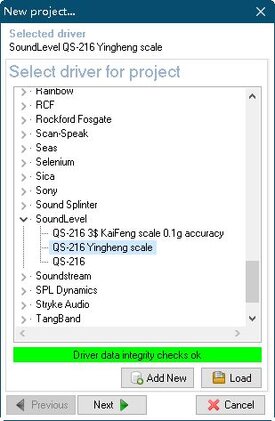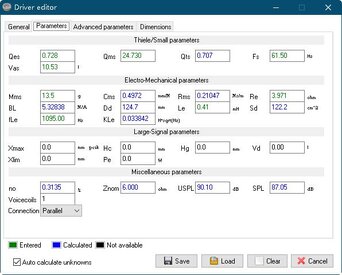John Mulcahy
REW Author
- Joined
- Apr 3, 2017
- Posts
- 9,064
If you look at the plot of simulated impedance versus measured impedance for the added mass measurements you will see whether the fit is good, with accurate masses and good measurement the simulation is a very close match to the measurement. If there are significant differences in the position and height of the peak that suggests the mass figures are incorrect. A more accurate scale is a good idea.
















